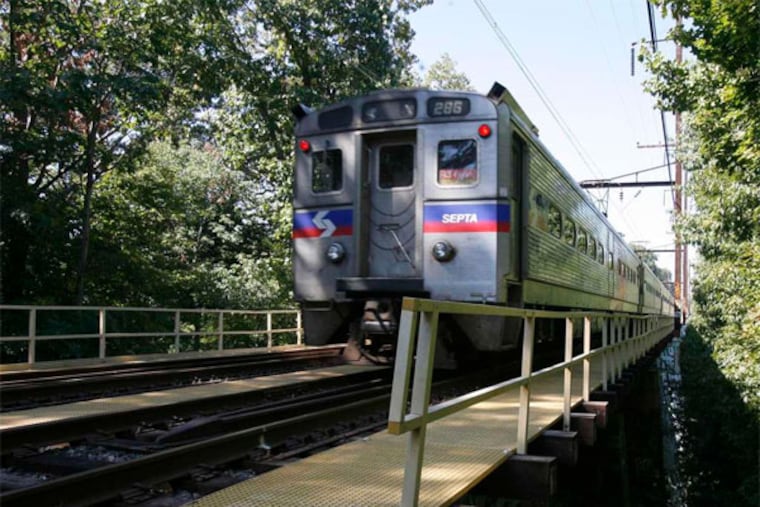SEPTA aims for happier riders in proposed 5-year plan
With increased state funding and stable ridership, SEPTA officials are unveiling a five-year plan to attract more riders, repair crumbling infrastructure, and improve customer satisfaction.

With increased state funding and stable ridership, SEPTA officials are unveiling a five-year plan to attract more riders, repair crumbling infrastructure, and improve customer satisfaction.
Having emerged from last year's doomsday scenarios into a hopeful era of what SEPTA planners call "innovation, integration, and renewal," the officials outlined Tuesday a blueprint for the future that was to be presented to the agency's board for approval in July.
Meeting with transit users and supporters at SEPTA's Center City headquarters, Byron Comati, director of strategic planning, said legislative approval late last year of a $2.3 billion boost in statewide transportation funding has allowed SEPTA to plan more boldly.
By 2018, the additional state funding will mean a boost of about $400 million annually for SEPTA to repair bridges, buy new vehicles, and upgrade stations and equipment.
"We are at an interesting crossroads for the authority," Comati said. "We can certainly be much more creative in our thinking."
The five-year strategic business plan lays out expectations for modest ridership growth, new buses and trolleys, major reconstruction of bridges and power stations, better on-time performance, fewer accidents, happier customers, and a diverse and competent workforce.
The plan also establishes yardsticks for measuring success. For example, the goal for on-time arrival of city buses is supposed to reach 78 percent by 2019, up from the current 76 percent, and social-media contacts are to reach 557,700 people in 2019, up from 371,800 this year.
SEPTA wants overall ridership to grow 5 percent, on a per capita basis, by 2019, with operating expenses to grow no faster than inflation.
SEPTA hopes to double its annual spending for vehicle purchases and construction projects to $600 million.
The state-funded increases in the capital budget will allow SEPTA to cut into a $5 billion backlog of repairs.
Plans call for SEPTA to finally replace century-old rail bridges, such as the Crum Creek Viaduct on the Media-Elwyn Line, and decrepit power plants, such as the Jenkintown Substation, built in 1931. The agency also will move to replace the 43-year-old Silverliner IV railcars that make up two-thirds of its fleet.
The proposed five-year plan can be viewed at www.septa.org/reports/2015-2019/strategic-business-plan.html
Public comments on the plan will be accepted through June 20; they can be sent by e-mail to StrategicPlan@septa.org or by postal mail to Strategic Planning & Analysis Department, 1234 Market St., Ninth Floor, Philadelphia 19107.
Transit agency's proposed five-year plan includes bridge repairs, fewer accidents, happier riders.
Goals and measures of success:
78%
On-time arrival of city buses by 2019, up from 76% now.
557,700
People reached through social-media contacts, up from 371,800 this year.
5%
Increase in overall ridership, on a
per capita basis,
by 2019.
EndText
215-854-4587
@nussbaumpaul